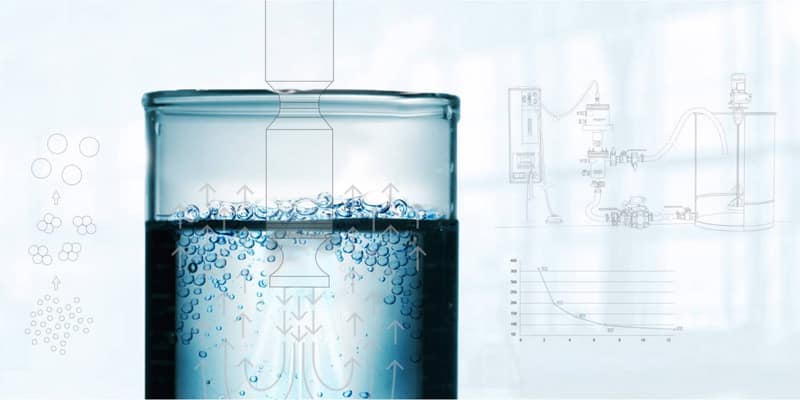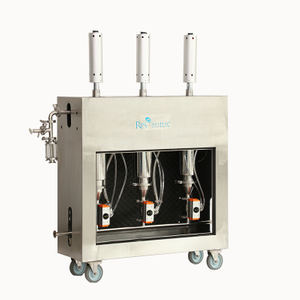Ultrasonic Jam Sterilization Technology
This is a non-thermal processing technology utilizing ultrasonic energy, designed to sterilize and preserve liquid foods such as jams without using high temperatures or with minimal heating.
Core Concept: What is Ultrasonic Jam Sterilization Technology?
Ultrasonic jam sterilization technology, also known as ultrasonic-assisted sterilization or acoustic cavitation sterilization, utilizes high-intensity, low-frequency ultrasound (typically in the range of 20kHz-100kHz) to generate strong physical and chemical effects in liquid media (such as jam), thereby destroying the structure of microorganisms (such as bacteria, yeast, and mold), achieving sterilization or significantly reducing the number of microorganisms.
It is often combined with gentle heating (50°C-60°C) or moderate pressurization to create a synergistic effect, greatly improving sterilization efficiency.
Working Principle: Acoustic Cavitation Effect
The core of this technology is the acoustic cavitation effect. The entire process can be broken down into the following steps:
Ultrasonic Injection: High-intensity ultrasound is transmitted into the jam through a transducer.
Cavitation Bubble Formation: Ultrasonic waves are longitudinal waves with alternating compressions and rarefactions. In the negative pressure phase (rare phase), the liquid is stretched, and the existing tiny gas nuclei (cavitation nuclei) inside rapidly expand, forming tiny bubbles.
Cavitation bubble collapse: In the immediately following positive pressure phase (compression phase), these newly expanded bubbles are rapidly compressed and implode within an extremely short time (microseconds or even nanoseconds), collapsing and disintegrating.
Energy release: This implosion process creates extremely extreme local environments:
Extremely high temperatures: At the collapse epicenter, theoretical temperatures can reach over 5000K (approaching the surface temperature of the sun).
Extremely high pressures: Local pressures can reach over 1000 atmospheres.
Intense shock waves and microjets: The asymmetric collapse of the bubbles generates high-speed microjets and powerful shock waves.
Sterilization mechanism: How does the cavitation effect kill microorganisms?
The extreme energy released during the collapse of cavitation bubbles acts in multiple ways, leading to the inactivation of microbial cells:
Mechanical and Physical Damage:
Cell Membrane Rupture: The intense shockwaves and microjets act like "miniature projectiles," directly impacting and tearing the cell walls and membranes of microorganisms, causing leakage of cell contents and complete destruction of cell structure. This is the primary sterilization mechanism.
Chemical Effects (Free Radical Attack):
Under the high temperature and pressure generated by the collapse of cavitation bubbles, water molecules break down, producing a large number of free radicals, such as ·OH (hydroxyl radicals) and ·H (hydrogen radicals).
These free radicals have extremely strong oxidizing properties; they attack the cell membranes, enzymes, and genetic material (DNA/RNA) of microorganisms, leading to metabolic dysfunction and death.
Thermal Effects:
Although the local temperature at the cavitation point is extremely high, its range and duration are extremely short, thus having little impact on the overall macroscopic temperature of the jam system. This localized high temperature has a lethal effect on microorganisms located directly near the collapse point.
Technical Advantages (Compared to Traditional Heat Sterilization)
Compared to traditional high-temperature pasteurization or ultra-high-temperature (UHT) instantaneous sterilization, ultrasonic sterilization technology offers significant advantages:
Better Preservation of Nutrients and Flavor: Due to the low processing temperature (even with auxiliary heating, it is far lower than traditional high temperatures), heat-sensitive vitamins (such as vitamin C), natural pigments, aromatic substances, and flavor components in the jam are preserved to the greatest extent.
Superior Color and Texture: Avoiding excessive browning caused by Maillard reactions and caramelization, the jam retains a more vibrant natural color and a fresher texture.
Energy Efficiency: Ultrasonic energy acts directly on microorganisms, resulting in high energy utilization and a relatively short processing time.


 English
English














